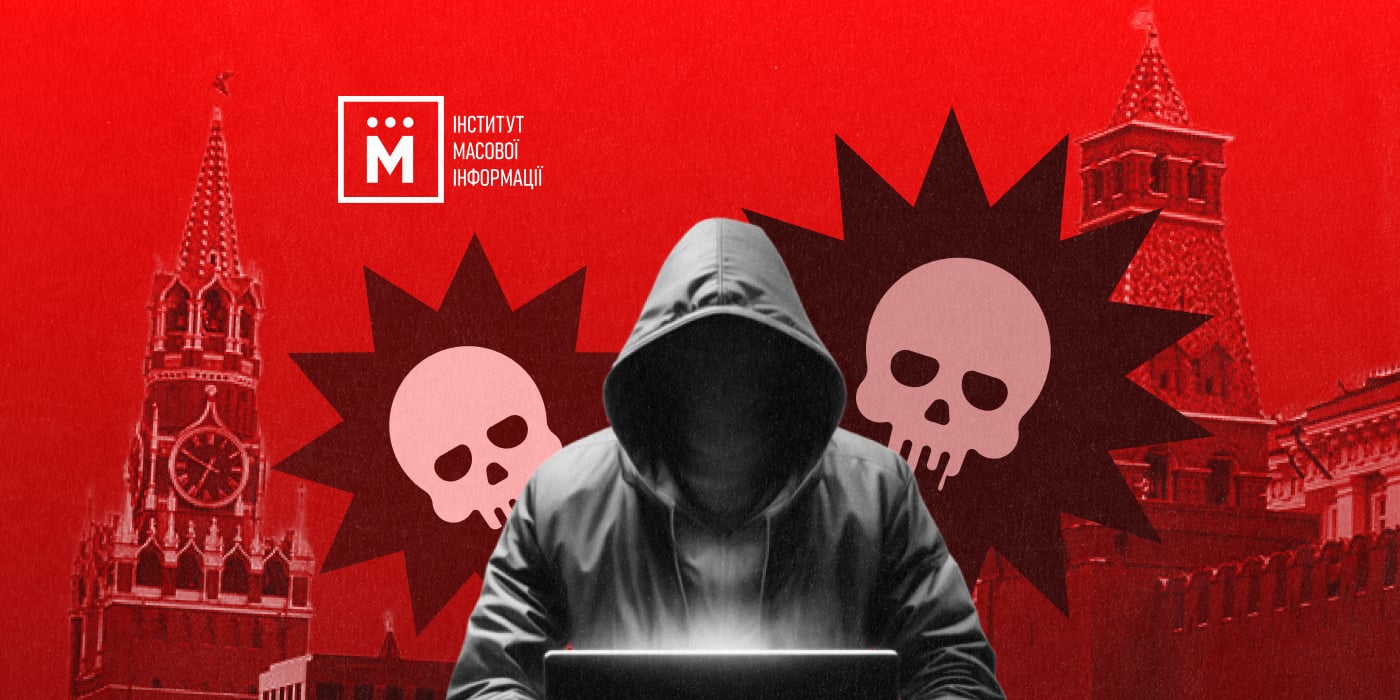
Illustration by the Institute of Mass Infrormation
The Institute of Mass Information recorded at least 127 cases of death threats and intimidation of journalists and the media in the three years of Russia’s full-scale war against Ukraine.
This category is the largest in terms of how many cases the Institute of Mass Information recorded in its monitoring study of Russia’s crimes against journalists and the media, said Kateryna Dyachuk, the IMI’s chief of freedom of speech monitoring, at the public discussion “Three Years of Resistance: Freedom of Speech in the Face of a Full-Scale Russian Invasion” in Kyiv on February 21.
Journalists and teams of both national and regional media outlets have received threats. At the onset of the invasion, in 2022, the occupiers would threaten journalists physically by coming to their homes or to the homes of their parents. Later, death threats and intimidation moved to the Internet: Russian forces would sent emails threatening prosecution, imprisonment in Siberia, torture, interrogations, and nuclear strikes, and even began sending rhymed threats after a while. The letters were coming from the Russian domain mail.ru and were signed by various users.
This trend was also observed in the third year since the beginning of the invasion. In 2024, Russia continued to intimidate and threaten journalists. The IMI recorded three waves (in October, November and December) of anonymous threats to bomb editorial offices and institutions in different regions across Ukraine: multiple media outlets and journalists received identical emails to that effect. Some of the letters mentioned three Radio Liberty journalists whom the senders asked to blame for the allegedly upcoming attacks. These journalists were Iryna Sysak, Valeria Yehoshyna, and Yulia Khymeryk: te three had previously investigated the Russian special services’ efforts to recruit Ukrainian children to set fire to Ukrainian army vehicles. Having checked the bomb reports, the Ukrainian police stated that the threats were found to be false and that they had come from Russian IP addresses.
The senders of the emails called themselves “ATO veterans” and “war invalids”, claiming to have planted “homemade explosive devices” in media offices, which they threatened to remotely activate over a certain period. The emails contained Russian loanwords, stylistic and grammatic errors, hate speech and insults, as well as calls for mass murder.
In early 2025, media workers continue to receive anonymous emails about bombs planted in editorial offices. Even though checks by the relevant agencies have so far proven all threats to be false, it nevertheless hindered the work of the media outlets, who had to evacuate their teams from the buildings.
The Institute of Mass Information (IMI) is a Ukrainian non-governmental media organization that has been operating since 1996. The IMI defends the rights of journalists, analyzes the media field and covers media-related events, fights propaganda and disinformation and has been providing media outlets with safety gear for trips to the combat zone since the start of the Russo–Ukrainian war in 2014.
The IMI carries out Ukraine’s only freedom of speech monitoring and keeps a list of high quality and sustainable online media outlets, documents Russia’s crimes against the media committed in the course of the war on Ukraine. The IMI has representatives in 20 oblasts of Ukraine and a network of “Mediabaza” hubs to provide journalists with continuous support. The IMI’s partners include Reporters Without Borders and Freedom House; the organization is a member of the International Organization for the Protection of Freedom of Expression (IFEX).
